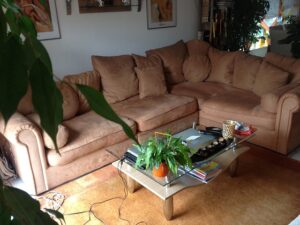Stress is a common problem that affects many adults. One way to combat stress is by creating a relaxing environment at home. In this blog post, we will provide you with ten tips to help you create a calming space that will help you reduce stress levels and improve your overall well
With the current global pandemic, many of us are spending more time at home than ever before. It’s important to create a space that promotes relaxation and calmness, especially since stress levels are likely to be higher due to the ongoing uncertainty and changes in daily life.
By implementing these tips, you can create a peaceful environment that promotes relaxation and lowers stress levels, making it easier to unwind and recharge after a long day.
Declutter Your Space
 One of the first steps to creating a relaxing environment is to declutter your space. Having too many items in your living space can create a sense of chaos and make it difficult to relax. Consider removing items that you no longer need or use and organize your space in a way that promotes relaxation.
One of the first steps to creating a relaxing environment is to declutter your space. Having too many items in your living space can create a sense of chaos and make it difficult to relax. Consider removing items that you no longer need or use and organize your space in a way that promotes relaxation.
For example, you can use storage containers and baskets to keep items organized and out of sight. You can also consider donating items that you no longer need or use to create more space in your living area.
By decluttering your space, you can create a sense of calmness relaxation in your home.
You can add plants in various ways, such as hanging plants, potted plants, or even a small herb garden on your windowsill. Consider adding plants that are easy to care for, such as succulents or spider plants, if you are not an experienced gardener.
By adding plants and greenery to your living space, you can create a more peaceful and relaxing environment that promotes well-being.
Invest in Comfortable Furniture and Textiles
Comfortable furniture and textiles can also help to create a relaxing environment. Consider investing in a comfortable sofa, armchair, or ottoman that you can sink into after a long day. Choose textiles that are soft and cozy, such as blankets, pillows, and rugs.
You can also add curtains or blinds that provide privacy and block out light, creating a more calming environment.
By investing in comfortable furniture and textiles, you can create a cozy and inviting space that promotes relaxation and reduces stress levels.
Use Soothing Colors
The colors you use in your living space can also have an impact on your stress levels. Consider using soothing colors, such as blue, green, or lavender, which have been shown to promote relaxation and reduce stress levels.
You can incorporate these colors into your living space in various ways, such as painting your walls, adding accent pillows, or using artwork or accessories that feature these colors.
By using soothing colors in your living space, you can create a calming environment that promotes relaxation and well-being.
Create a Relaxing Atmosphere with Lighting
Lighting is another important factor in creating a relaxing environment. Soft and warm lighting can help to create a calming atmosphere that promotes relaxation.
You can achieve this by using dimmer switches or adding lamps with soft lighting to your living space. You can also consider using candles or diffusers that feature calming scents, such as lavender or chamomile.
By creating a relaxing atmosphere with lighting, you can create a peaceful living space that reduces stress levels and promotes relaxation.
Incorporate Soundscapes or Music
Soundscapes or music can also help to create a relaxing environment. Consider incorporating background noise, such as white noise or nature sounds, that can promote relaxation and reduce stress levels.
You can also listen to calming music or create a playlist of songs that help you to relax and unwind. Consider using noise-canceling headphones or a Bluetooth speaker to create an immersive and soothing experience.
By incorporating soundscapes or music into your living space, you can create a more peaceful and relaxing environment that promotes well-being.
Minimize Digital Distractions
Digital distractions, such as social media or email notifications, can increase stress levels and make it difficult to relax. Consider minimizing these distractions by turning off your phone or setting it to airplane mode during designated relaxation times.
You can also consider setting boundaries around your digital use, such as limiting your screen time or designating specific times of day to check your email or social media accounts.
By minimizing digital distractions, you can create a more peaceful and relaxing living space that promotes relaxation and reduces stress levels.
Create a Relaxing Bedtime Routine
Creating a relaxing bedtime routine can also help to reduce stress levels and promote relaxation. Consider incorporating activities that help you to unwind and prepare for sleep, such as taking a warm bath, reading a book, or practicing meditation or yoga.
You can also create a comfortable sleep environment by investing in a comfortable mattress, pillows, and bedding that promote restful sleep.
By creating a relaxing bedtime routine, you can promote relaxation and reduce stress levels, setting the stage for a good night’s sleep and a more restful day.
By implementing these ten tips, you can create a relaxing environment at home that promotes relaxation and reduces stress levels. Whether you are spending more time at home due to the ongoing pandemic or simply looking for ways to reduce stress and promote well-being, creating a calming living space can help you to achieve your goals.
Remember, creating a relaxing environment is a process that takes time and effort, but the results are worth it. By following these tips, you can create a peaceful and calming space that promotes relaxation and reduces stress levels, making it easier to unwind and recharge after a long day.





